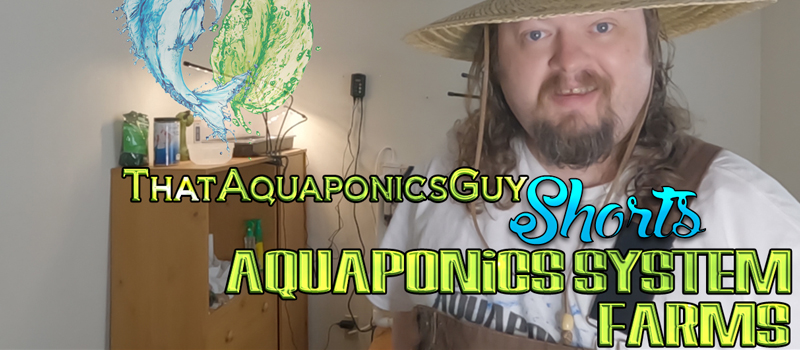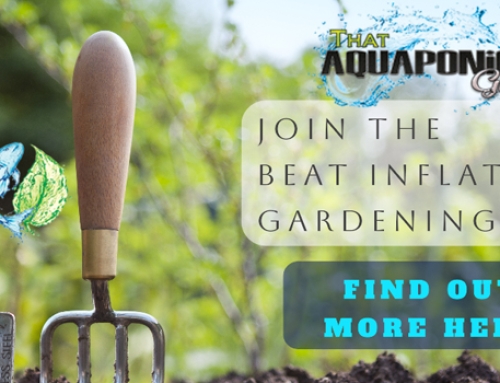Aquaponics System Farm – Questions Answered
An Aquaponics System Farm can be constituted when you seek to increase the volume your systems produce. With the proper methods, and the right planning you can gain that increase you have in mind. When you get your growing processes down, is when you can get the fruits, veggies and roots in the larger numbers more frequently as you would desire.
Streamlining your growing processes in your systems, would be similar to what the large area farmers do year in and year out. They sit down and plan what they can plant, how many acres to plant the chosen seed in, and what needs to be done to those acres to get it ready for planting for the upcoming year. Unlike the larger area farmers, backyard farmers using Aquaponics Systems can have shorter growing times of their crops and have continual planting, seedling transplanting, nurturing, and harvesting seasons. If your multiple Aquaponics Systems are in a steady climate, conducive to growing year round, one could have dozens of cycles of plants growing and bearing ‘fruit’.
Aquaponics System Farm – the deeper dive
What one would need for an Aquaponics System to yield more is done not only in timing (the planting to harvesting time frames) but also the overall capacity of what the grow beds can accommodate. Simply put, the size of your grow beds (and the resulting nitrogen enriched water within them) only have so much space. If you are looking to increase your yield by two or three times, you will need to increase the amount of grow beds and the amount of fish you have to service those additions.
Thus, instead of just having one system you will have several, which would constitute the term Backyard Aquaponics Farming. Keep in mind the space in which you put your additional systems in, if they are not able to be climate controlled year round you will experience the loss of your fish and have to restart your systems at the beginning of each spring if they cannot maintain the right temperatures for the fish or the growing plants.
Let’s say, for argument sake, that you do have a larger space, climate is not a factor and you want to increase your growing results. The following can be some of the ways you can experiment with the optimization as much as possible the capabilities of each system:
Methods
We have identified the main activities of the growing process. 1) Planting – the germination and the seedling growth methods (using rockwool or small dirt planters for example) how long they take to grow to a hardy transplantable stage is a factor. Keep in mind that each type of plant that bears a different vegetable can vary in their growth cycles, some can come on quickly and be introduced to the grow beds within 3 or 4 weeks. Others can take just that amount of time to gain length but need an additional few weeks to be ready to transplant. This variable and how you schedule each one can be what determines the greater numbers to our harvest yields.
Then there is 2) Nurturing the plants once they have been transplanted into the grow beds is another factor to consider. How long does a plant take to flower and bloom? From that point until vegetables are ready to harvest? What additional nutrients, if any, do the plants need to support a greater yield of their bounty? Again the time that each type of plant takes in the natural course of growing must be considered to properly plan your Aquaponics Systems Farm.
Lastly there is 3) Harvesting – also dependent on the type of plant you are growing and looking to gain delicious eatables from, is how many times it can go through the flowering to harvest cycle. Is it just once, or can you do it continually? Is it one cycle at a time, or can it run consecutively? Once the plant is exhausted and no longer producing what do you do with it? Lastly, is it a one time only or a perennial?
Getting the time frames right can help you avoid a lot of starts and stops that would delay and minimize what your harvest results could be.
Timing
Which all leads into timing. How you plan each stage with each type of plant and veggie/fruit and guide them from “birth to death” is all determined on what you have experienced before. Yes, I said that correctly. Sure, you can go to the local nursery, and get estimates from those that work there, you can even go to the likes of agricultural colleges and get their time frames. Most times, they are going to give you what your plant of choice has done in the ground, outdoors. Which can be a good place to start, however you may see the timing of growing indoors a bit differently.
As you are going through your first growing period, keep a close eye on the time it takes for those plants in each stage. Write them down even. Then when you get to the next period of time you can better gauge and toggle the growing systems in each grow bed, thus better optimizing your space, and timing for higher and more frequent yields.
I am sorry that there is no other clear cut way to give this to you. There is not a set chart with seed-plant-grow time-harvest times to an exact ‘T’. However you can develop one for yourself, with the chosen fruits and vegetables you seek to grow, harvest and eat.
Harvesting
Now, the point of all this is to be able to not only grow your own food, but to use it to sustain you over the course of time. There are ways beyond just using them fresh from the vine, that you can elongate their bio availability to your advantage. When you get your system humming smoothly, there are ways to be able to preserve, pickle, dehydrate, freeze dry or can what you get from those precious plants. CLICK HERE to start getting the basics on how to preserve that food you are growing on your ever increasing Aquaponics Systems Farm!






